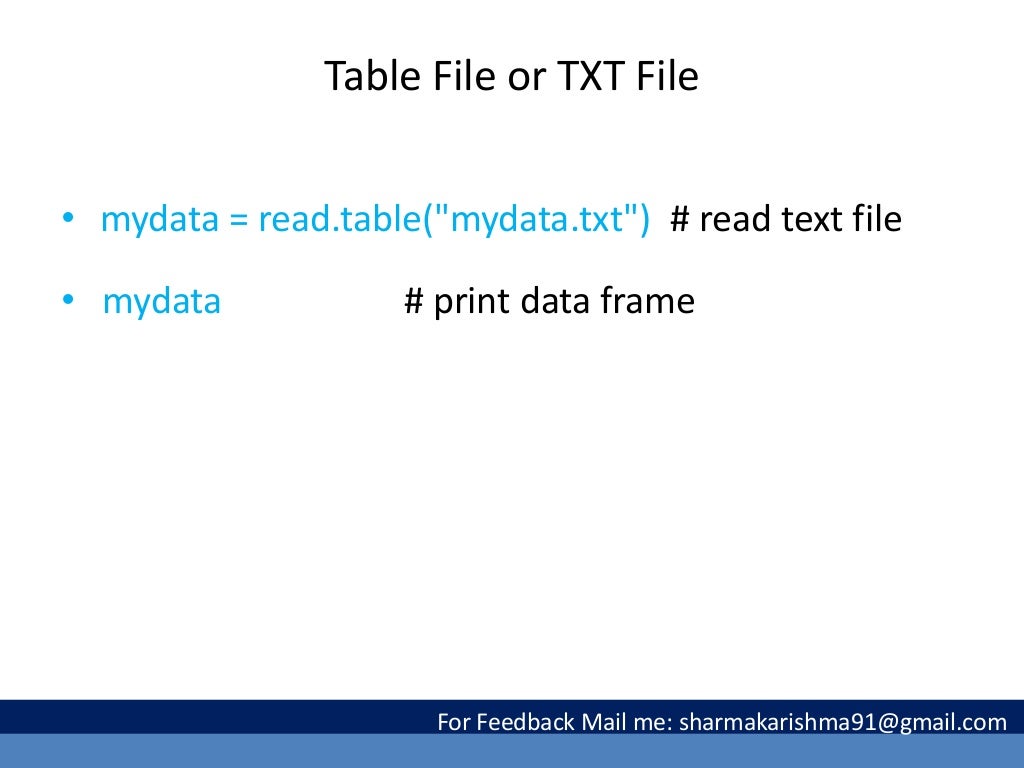

- #READ TXT FILES IN R SOFTWARE#
- #READ TXT FILES IN R PROFESSIONAL#
Psychological First Aid by Johns Hopkins University.Excel Skills for Business by Macquarie University.Introduction to Psychology by Yale University.Business Foundations by University of Pennsylvania.
#READ TXT FILES IN R PROFESSIONAL#
IBM Data Science Professional Certificate by IBM. Python for Everybody by University of Michigan. Google IT Support Professional by Google. The Science of Well-Being by Yale University. AWS Fundamentals by Amazon Web Services. Epidemiology in Public Health Practice by Johns Hopkins University. Google IT Automation with Python by Google. Specialization: Genomic Data Science by Johns Hopkins University. #READ TXT FILES IN R SOFTWARE#
Specialization: Software Development in R by Johns Hopkins University.Specialization: Statistics with R by Duke University.Specialization: Master Machine Learning Fundamentals by University of Washington.Courses: Build Skills for a Top Job in any Industry by Coursera.Specialization: Python for Everybody by University of Michigan.Specialization: Data Science by Johns Hopkins University.Course: Machine Learning: Master the Fundamentals by Standford.Write.csv2(my_data, file = "my_data.csv")Ĭoursera - Online Courses and Specialization Data science The syntax is as follow: write.csv(my_data, file = "my_data.csv") write.csv2() uses a comma (“,”) for the decimal point and a semicolon (“ ”) for the separator.

write.csv() uses “.” for the decimal point and a comma (“,”) for the separator. It’s also possible to write csv files using the functions write.csv() and write.csv2(). If col.names = NA and row.names = TRUE a blank column name is added, which is the convention used for CSV files to be read by spreadsheets. col.names: either a logical value indicating whether the column names of x are to be written along with x, or a character vector of column names to be written. row.names: either a logical value indicating whether the row names of x are to be written along with x, or a character vector of row names to be written. dec: the string to be used as decimal separator. sep: the field separator string, e.g., sep = “\t” (for tab-separated value). file: a character specifying the name of the result file. x: a matrix or a data frame to be written.






 0 kommentar(er)
0 kommentar(er)
